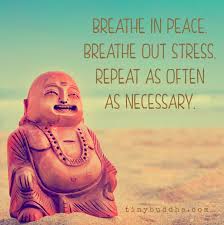Breath-work, the act of conscious breathing, used alongside massage in any capacity decreases the levels of pain in the body and allows the work to be more profound and long lasting. There times where I notice that if I slow my breathing down, in the manner I am trying to get my clients to, they follow along without necessarily knowing they are doing this.
I tend to get clients who deal with chronic and acute pain and/or carry levels of tension that stubbornly persist. What I have noticed over time, specifically with one particular client of mine, is that the only way to get her to relax and be more receptive to the work is to actively keep her engaged in slow and intentional breathing. Only then does her body respond in the way that is needed to get her comfortable. I joke around that most of us breath just enough to stay alive, but it’s more reality than joke. As I have had increased clients who suffer from deep rooted and persistent stress, focusing on the breath increases their results from the session, but hopefully becomes a practice they take into their day to day lives.
Based on Zautra’s hypothesis and other health teachings, the benefits of deep and slow breathing are likely due to one or more of the following:
- Nervous system balance – Slow breathing helps improve the balance between the sympathetic nervous system (the fight-or-flight response that raises heart rate, blood pressure and perspiration during stress) and the parasympathetic nervous system (responsible for the relaxation response).
- Oxygenation – Shallow, rapid breathing restricts the amount of oxygen available to circulate in the bloodstream, while deep diaphragmatic breathing increases oxygen intake. Deep, slow breathing more than doubles the blood’s oxygen quantity.
- Muscle hypertonicity – Shallow, rapid breathing tightens the neck and shoulder muscles, easily leading to a cycle of chronic pain in these areas
The increased focus on engaging the diaphragm also contributes to decreased lower back pain and easing of chronic tension in the neck, shoulders and arms. These are the most common complaints. While sometimes conversation in a session in necessary, I have found by limiting this as much as possible allows the client to truly focus on getting the body to where it needs to be and instills the practice in them long term. There is still a checking in of comfort levels, and conditions change from session to session, but it should be kept to a minimum to get the real work done.

